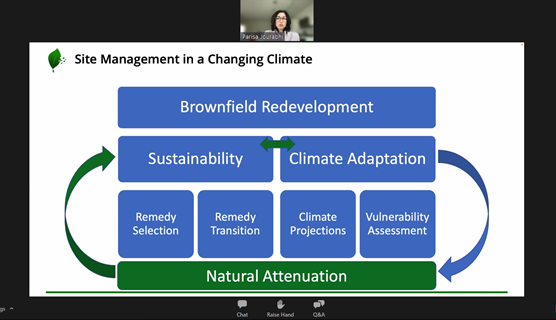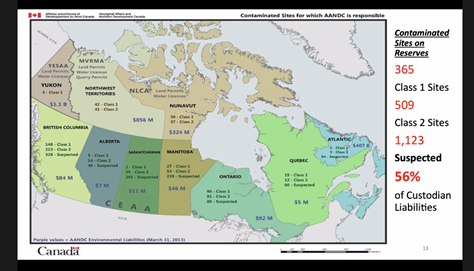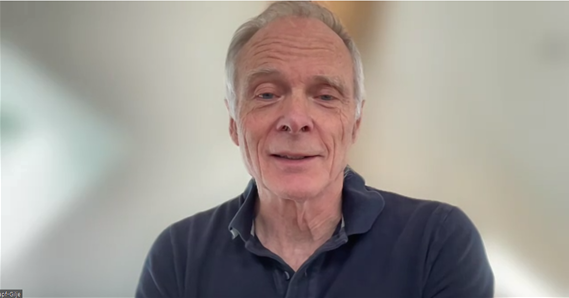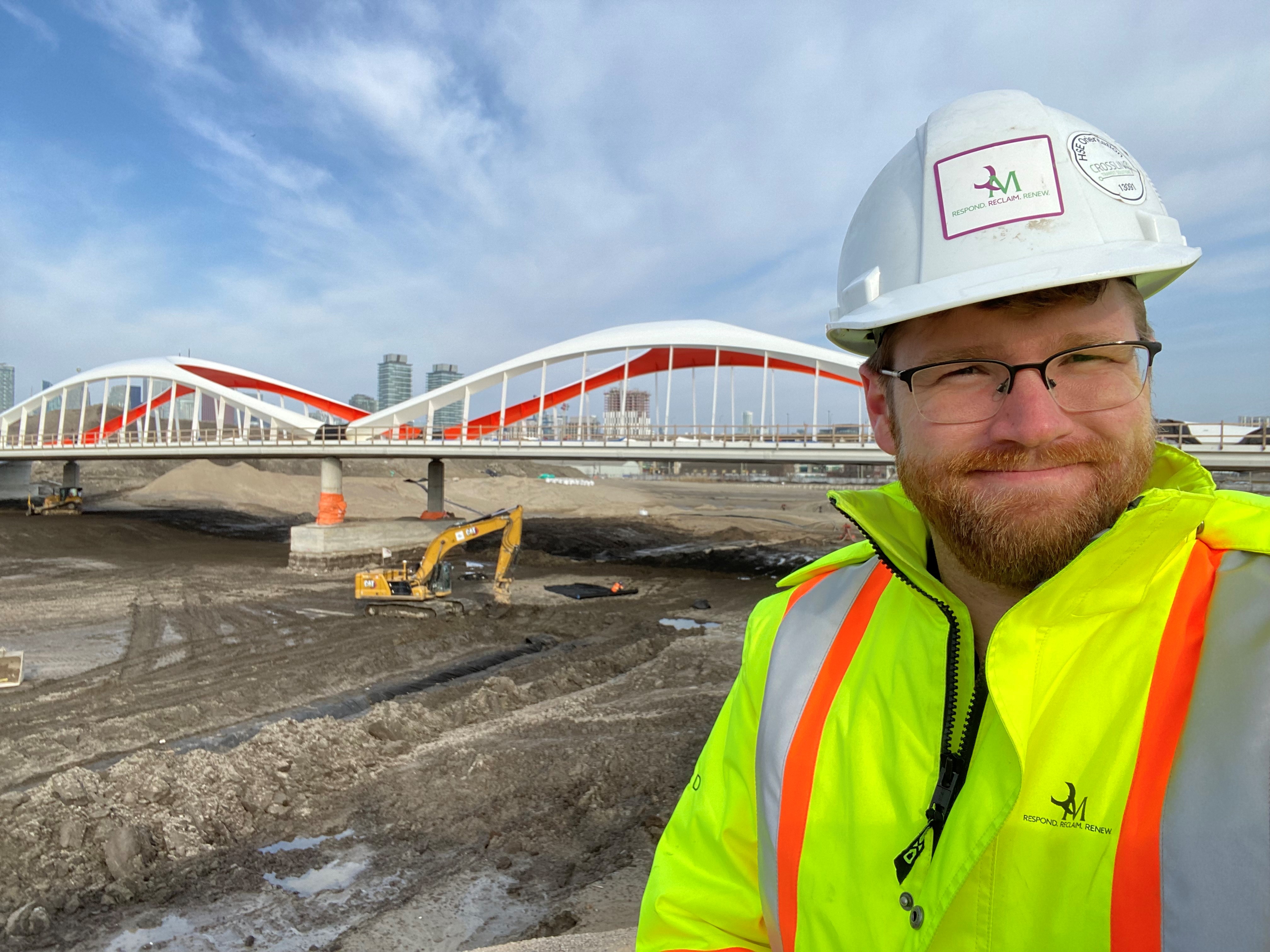Driven by growing cultural and social awareness, Environmental Social and Governance (ESG) considerations are becoming increasingly significant in the real estate investment sector. On April 5 and 6, the Canadian Brownfields Network (CBN) presented its annual conference, delivering cutting edge content exploring the relationship between ESG and brownfield land development.
The conference, entitled “Environmental, Social and Governance (ESG) and Brownfield Land Development: Making the Connection” was presented virtually this year. CBN’s annual conference attracts attendees from across Canada, including land developers, engineering firms, environmental remediation companies, and legal and financial experts. Environment Journal is a proud media sponsor.
“ESG considerations are becoming more important in the real estate development and investments sectors,” said Krista Barfoot, a co-chair of the CBN and a principal at Stantec. “This means we are seeing in the industry a need to build these considerations into projects.”
Barfoot cited a recent survey that indicated how more than 90 per cent of over 500 businesses surveyed indicated that ESG considerations have had a greater impact on their compeititiveness, reputation and bottom line.

Krista Barfoot, principal at Stantec, is co-chair of CBN and helped emcee the conference.
Legal framework for ESG
Joanna Vince, partner at Willms & Shier Environmental Lawyers LLP provided a compelling keynote presentation on the “Legal Framework for ESG.” Environment, Social and Governance (ESG) factors have become key considerations for investors locally and globally. ESG signals a move by lenders and investors towards companies and projects that promote positive environmental, social, and corporate governance initiatives. The presentation provided an overview of ESG and set the stage for a discussion of how brownfield projects intersect and fit within the ESG framework to promote responsible land development.
When it comes to ESG and brownfields, Vince pointed out the following key aspects:
Environment – promote urban intensification, reduce greenhouse gas emissions, and clean up contaminated sites for beneficial reuse
Social – promote energy independence, engage with Indigenous communities and businesses, and generate revenue opportunities to contribute to socio-economic health of communities
Governance – integrate brownfield outcomes into governing frameworks and strategies
Vince left attendees with a some takeaways: the focus around ESG is expected to continue growing as legislation, reporting and metric development continues; there are numerous opportunities associated with ESG, such as receiving financing or investment contingent on ESG factors; and, brownfields redevelopment can be integral to promoting ESG objectives.
Nature based solutions to manage contaminated sites
Parisa Jourabchi, founder and chief scientific officer of ARIS Environmental Ltd. provided an engineer’s perspective on how the environmental objectives in an ESG program can be met when redeveloping brownfields – with a focus on sustainable practices, climate change mitigation and adaptation measures, and urban intensification.
What methods can promote nature-based solutions in the management of contaminated sites in a changing climate?
As contaminated site management moves toward risk management rather than resource intensive remediation, information and computing technologies (ICT) will be increasingly applied. These advances have resulted in the development of methods for the estimation of natural attenuation rates in the subsurface. While historically, the focus has been on biodegradation processes occurring in the saturated zone and impacts to groundwater, review of literature and guidance support the greater role of natural depletion processes and pathways in the vadose zone.
Jourabchi’s presentation provided an overview of the natural source zone depletion (NSZD) processes and pathways along with methods for the quantification of the rates. The estimated rates can be used as metrics to inform decision making in the selection and performance monitoring of remedial systems.
In parallel to sustainable remediation, climate resiliency measures factor into the site management process, based on climate change projections that can be region and site specific. These projections include sea level rise, flooding, precipitation, wildfires and land erosion as identified in various guidance on climate adaptation for remediation of contaminated sites. In addition, high subsurface complexity, varying land and local weather conditions strongly impact contaminant fate and transport to make each site unique.
There has been a shift from a focus on active remediation to more natural resilience and adaptation strategies for resilient cleanup remedies.
Addressing the uniqueness of sites in a changing climate requires:
- Sustainable remediation for reducing the environmental footprint;
- Adapting to the climate change impacts by considering remedial timeframes and performance monitoring of remedial systems.
Triple bottom line of brownfields redevelopment
Carla Guerrera, founder and CEO of Purpose Driven Development & Planning discussed the significant triple bottom line impacts that the revitalization of underutilized lands through regenerative development brings to communities and cities. Drawing on international and local case studies and examples from her own experience and expertise working on major revitalization projects across Canada, and now as a board member for the Thames Estuary Growth board in the UK, Guerrera shared her key approaches and strategies to revitalizing underutilized lands.
Guerrera has delivered over $1 billion of complex, mixed-use real estate development across Canada’s markets over the past 20 years, with 80 per cent of her projects focused on brownfield redevelopments.
Notable projects include West Don Lands waterfront revitalization on Toronto’s waterfront, one of the world’s most advanced waterfront revitalization initiatives.
Given urban growth pressures, climate change impacts and the strained economic conditions of our cities, the opportunity to revitalize our post industrial, underutilized waterfront lands is both timely and unparalleled. Post industrial underutilized waterfronts present some of the largest unrealized potential for cities around the world.
She also emphasized that waterfront revitalization creates exponential opportunity for addressing key challenges that cities face like reducing urban sprawl, mitigating and adapting to climate change, generating economic return on investment and creating social equity for cities. Successful case studies and lessons learned from globally award-winning revitalization projects demonstrating regenerative development. These projects have transformed cities to achieve significant social, environmental and economic impacts that have had ripple effects across the cities and region.

Carla Guerrera said “brownfields are perfect opportunity to achieve regeneration” particularly because of their access to urban centres and waterfronts given their special locations.
She emphasized that regenerative development principles include a global approach versus self interest, with challenges transformed into opportunities and a long term framework where there’s transparency and “everyone wins.”
There have been some impressive large brownfield redevelopments but cities are also increasingly dedicated to small and medium size projects.
Guerrera cited the “huge payoff in these investments that demonstrate that revitalization is a proven catalyst for economic recovery.” According to US data, for every $1 the public sector invested, there is $18 to $31 of private sector investment for revitalization initiatives. For every 1 acre of land revitalized, an average of nine new jobs are created. Increased land value and revenue generation opportunities for public and private sector increased from five to 20 per cent.
The Port Lands project has been selected as a candidate to be one of 17 founding projects of the Clinton Foundation’s Climate Positive Development Program. It will be Canada’s opportunity to build an “intelligent, inclusive, sustainable and globally competitive community from the ground up.”
“Successful revitalization world-wide is characterized by strong local government leadership, often in partnership with senior levels of government and the private sector,” stated Guerrera. “Such cooperative initiatives catalyze the necessary investment in revitalization on the basis that the private sector is not able to address these large-scale challenges on its own.”
She added that it’s necessary for government to help de-risk some of these sites that have so much potential.
“In my opinion, we should not be doing development anywhere else, until these sites are redeveloped.” Brownfield redevelopment is a huge opportunity to tackle urban sprawl and climate change.
Leveraging large scale developments to enhance environmental strategies
Tom Grimminck, partner at Dillon Consulting Limited provided a presentation exploring the opportunities to use large scale brownfield developments as a catalyst to promote the inclusion of design features that enhance the implementation of climate change adaptation opportunities and/or to include community wide carbon reduction strategies. Rather than being a review of projects or specific technologies the intent of this presentation is to provide a summary of items, tasks, technologies or actions to consider in the redevelopment of a brownfield site. It is further a challenge to brownfield professionals, planners, designers, regulators and site owners to critically consider these options.
Grimminck implored attendees to consider the following:
- Select the right level of acceptable environmental risk for the site’s use and implementing human health and ecological risk assessment to allow for the in situ management of historic impacts, and thereby reducing car
 bon-intensive remedial activities.
bon-intensive remedial activities. - The use of low occupancy/low exposure sites (e.g., pump stations, district energy centres, energy storage, bright field sites/solar farms, data storage and telecommunication sites, public parking, etc. ) on otherwise challenging brownfields.
- The benefits of using brownfield developments to combat urban sprawl and the associated reduction of carbon emissions related to reduced transportation.
Climate change adaptation through stormwater management opportunities.
He emphasized that the way to overcome the barriers and obstacles to environmentally advanced approaches is through education:
- Increased understanding of authorities approving and financing brownfield developments will lead to improved acceptance of risk approaches and therefore reduced GHG emissions tied to traditional remediation.
- Increased understanding of regulators and financiers will improve approval timeframes for risk-based approaches will help developers select more sustainable options that can help lower GHG emissions.
Some key ways to leverage brownfields:
- Green Infrastructure – use brownfields to improve storm water quality by incorporating low impact designs, green roofs, or shoreline protection and flood planning
- Use of Recycled Materials – use of recycled concrete and for backfill (respect groundwater and surface water receptors)
- Create Public Transportation Hubs and Multi-Use – mixtures of employment lands with residential lands
- Green / District Energy Considerations – roof top solar, district energy systems, and geothermal
He also pointed attendees to a new resource by the US-EPA’s recent — Climate Smart Brownfields Manual: https://www.epa.gov/land-revitalization/climate-smart-brownfields-manual
Remediation is reconciliation
Social aspects of ESG resonate through brownfield projects that bring a whole host of societal benefits. Several themes within social will be highlighted through project presentations involving brownfields and energy independence, socio-economic well-being, education and training, and affordable housing.
Drew Atkins and Gavin Domitter, national manager, Indigenous Relations & Business Development, Milestone Environmental Contracting presenting an inspiring talk on their journey with the Former Fraser Cedar Mill Site and IR5 Remediation and Restoration.
The Fraser Cedar site is an important Fraser River foreshore area on Kwantlen Indian Reserve No. 1, in Whonnock. “IR5” is Kwantlen Indian Reserve No. 5, located across and upriver from the British Columbia community. Both sites are subject to historical contamination; one the result of a former cedar mill and the other a former landfill. These areas were traditionally used by ancestors of the Kwantlen people, and continues to be an important area for Kwantlen’s future generations.
Seyem’Qwantlen and Milestone Environmental Contracting Inc. established a joint venture to complete the remediation of the mill site and subsequently the former landfill as the partnership has expanded in scope and capacity. Numerous technical challenges were overcome through innovative approaches, and each illustrate an evolution of working collaboratively and respectfully with Kwantlen First Nation, various levels of government, consultants, and others to remediate each site for development and the use and benefit of future generations of the Kwantlen people.
The ESG Social aspects of this project include:
- Developing the JV with Kwantlen FN that addressed the immediate need/opportunity of the first project while building capacity for the second and subsequent projects,
- Generating revenue opportunities contributing to the socio-economic health of the Nation through each and ongoing projects,
- Successfully completing a brownfield remediations on-reserve in areas with significant social and cultural history, and significant value for future use,
- Working with the Nation and Nation owned business to develop a long-term relationship with active projects to this day, and the associated benefits of this project, and
- Developing a sound governance structure to support the partnership and the relationship between Milestone Environmental Contracting Inc., Seyem’Qwantlen, and Kwantlen First Nation.
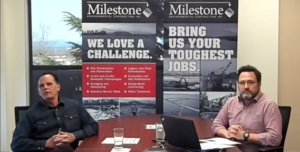
Drew Atkins and Gavin Domitter, national manager, Indigenous Relations & Business Development, Milestone Environmental Contracting.
Atkins discussed the cultural significance and holistic perspectives about developing and redeveloping Indigenous lands. “We’ve experienced a disenfranchisement through various developments of the past, so we want to redevelop in a meaningful way and take back the ability of Indigenous Peoples to manage their own land.”
Domitter detailed how Milestone’s guiding principles are aligned with meaningful Indigenous engagement and inclusion and the specific strategies to provide respect and recognition, community investment and lasting relationships. Atkins said he appreciated this commitment and that they are indeed aligned with the Kwantlen guiding principles that include “thinking seven generations ahead.”
The session explored the idea of remediation as reconciliation, highlighting how remediating former contaminated sites properly helps restore value for current and future generations.
Reanne Ridsdale, PhD Candidate at X University (Ryerson University is undergoing a name change) and a CBN board member, provided her insights into brownfield remediation at the Northlands Denesuline First Nation in Manitoba, a remote northern community that was completely reliant on diesel. The latest diesel contamination was at the community’s only school. Instead of conducting remediation alone, the community devised a plan to eliminate all future diesel spills by integrating green energy systems in their community. This project included 1000 solar panels, district biomass heating, and geothermal energy.
Why is this project so important? The multi-stage project included remediation, three alternative energy systems, employment and training programs – and an opportunity to address environmental racism, a legacy of structural inequality, and to provide energy sovereignty.
A map of contaminated sites located on reserves. Reanne Ridsdale emphasized the importance of addressing environmental racism, point out that BIPOC communities tend to be more exposed to contaminated sites due to the legacy of inequality.
Donny Sousa, general superintendent of Milestone Environmental Contracting also provided his contractor perspective of how the project partnership built capacity in a way that transferred skills and knowledge to the local communities while treating multiple contaminated sites due to old fuel tanks.

“One of the highlights of this project for me was being onsite with the local community members for orientation and training, in order to facilitate the success of this project,” said Sousa. “Training the local community members on the operations of this project was very rewarding. They are now self reliant and are managing the system themselves.”
Brownfields and affordable housing
As housing affordability continues to decline, underutilized and vacant brownfield sites provide a unique opportunity to provide new housing in existing urbanized areas. This presentation focused on examples of such developments occurring in the City of Hamilton and include a discussion of the city’s recent use of Community Improvement Plans and financial assistance/incentive programs to further promote affordable housing projects in the city, including forthcoming opportunities through the upcoming review of its Environmental Remediation and Site Enhancement (ERASE) financial assistance programs for brownfields.
Phillip Caldwell, senior project manager for commercial districts and small business for the City of Hamilton provided a couple of current case studies on how brownfields redevelopment can address affordable housing challenges.
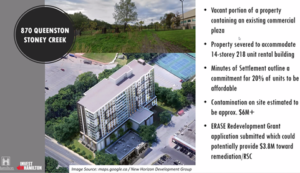
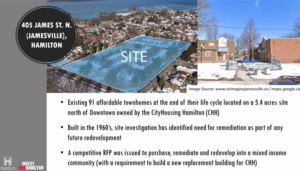
Best practices for good governance
How are brownfields defined by various ESG rating agencies and building standards? What demands exist elsewhere in your organization for successful brownfield management that you may not be aware of? How important is your ESG and brownfield management to lenders and insurers and how can internal teams best coordinate to gather information and highlight wins with success?
These are some of the questions brownfield professionals need to think of in 2022, according to Clayton Reynolds, vice president of ESG and risk solutions with Marsh.

The governance aspect of ESG may seem like “a snooze fest but nothing gets done without good governance,” said Reynolds.
Key takeaways from this presentation included:
- ESG is not what it used to be; it is growing in importance every few months. Be aware of the preside in the system.
- EDG is a competitive field and will lead to differential outcomes with capital providers across many sectors.
- Governance is not boring! It is essential to be effective; nothing gets done without good governance.
- Brownfield management and development is inherently linked to ESG, but likely not being properly promoted. Find ways to change that.
Aaron Barter, director of innovation and sustainability for Waterfront Toronto, also provided an overview of the innovative waterfront redevelopment project underway.
For decades, industrial lands were cut off from the rapidly growing urban centre of Canada. By 2001, the waterfront was the last expanse of underused land in Toronto.
So what’s next? Barter is excited about helping to develop the first climate positive neighbourhood in Canada. “Through strengthened environmental standards we can create a unique and precedent setting neighbourhood.”
Barter shared the unique structure focused on crating enduring public value. He explained how they’re putting the “G” in ESG, a nod to Toronto’s nickname and governance. He provided details about the Quayside development opportunity at the foot of Parliament Street and Lake Shore Boulevard East, including the green building requirements and net zero carbon strategies that are being incorporated to advance the design of this innovative development.
He also explained how the Waterfront Toronto Board of Directors is working to apply ESG metrics and reporting to measure impacts and track performance. The Rolling Five-Year Strategic Plan outlines the work that is currently underway on the waterfront and sets the strategic direction for the corporation over the next five years. To read the document, click here.

Moderator Suvish Melanta, an associate at Grounded Engineering with Aaron Barter and Clayton Reynolds. “Ethics are so critical – to build a program you need executive buy-in to do something meaningful instead of something reactive that looks like greenwashing,” said Reynolds.
How are companies using ESG criteria to facilitate responsible management? How can ESG considerations help identify risks and opportunities that could affect a company’s long-term sustainability? A dynamic panel session, moderated by Monisa Nandi, senior environmental project manager with the City of Toronto, explored how elements of ESG affect strategy development, decision-making, investment, and delivery in the real world.

Panelists included: Janet Bobechko, partner, Certified Specialist Environmental Law, WeirFoulds LLP; Paula Hutchison, a principal at Geosyntec Consultants; Bozena Jankowska, managing director and global head of ESG at Slate Asset Management; and, Lisa Prime, chief planner with the City of Cambridge.
Innovation is driving change in contaminated sites, said Hutchison, but it’s important to assess remedial options such as ESG components early in the decision-making process. She emphasized that life cycle analysis is critical to identifying the best solutions, including an assessment of carbon values for the various options available.
“Governance is the backbone of anything we do in the ESG space – we need to see more across the range of brownfields development projects,” stated Bobechko. Where do you start the ESG journey? Experts can help to clarify carbon footprints and provide solutions such as beneficial reuse.
There was a consensus across the panel conversation that projects developed at the intersection of ESG and brownfields can be beneficial for communities across Canada.
Recognizing outstanding brownfielders with the HUB Awards
CBN has been presenting the HUB (Heroes Underpinning Brownfields) Awards since 2016. They’re presented in recognition of brownfielders who are making a significant contribution to the progress of brownfield redevelopment in Canada.
There are three awards, each designed to correspond to a different stage of career growth:
- Foundation: Presented to a contributor to the Brownfield industry in Canada who has had a profound impact on how things are done today. Their work has provided a Foundation upon which the current practices and policies have been based. This is a “career achievement” award.
- Pillar: Presented to a recipient who has proven to be a Pillar of Strength in a significant aspect of the Brownfield industry in Canada. They continue to provide valuable expertise and influence into the policies and practices that we are employing. The Pillar award is a mid-career award.
- Vision: Presented to a relative new-comer to the Brownfield Industry in Canada and who is providing valuable insight into programs, policies or practices that will be improving how Brownfield redevelopment in Canada is completed.
The award hardware are artistic, unique pieces of repurposed metal. The pieces, designed by Eco-Artist Ruta Wilson, represent the spirit of brownfields through the revitalization of a previously used, undervalued asset.
Reidar Zapf-Gilje of GeoEnviroPro received the Foundation Award.
Steve Desrocher from Waterfront Toronto (left) received the Pillar Award from Grant Walsom of XCG Consulting.
Nicolas Doucette of QM Environmental received the Vision award.
For further information about this event, click here.
Brownie Awards
The Canadian brownfields community is looking forward to continuing to upcoming events, such as the Brownie Awards, which will be held on November 14, 2022. Be sure to nominate your favourite outstanding brownfielder or brownfield project, policy or program by September 14.
Here are the Brownie Award categories: https://brownieawards.ca/about-the-brownie-awards/
Featured image: The brownfield redevelopment of Parliament Slip has the potential to become a world class public destination and a sustainable connection between the city and Lake Ontario. Credit: Waterfront Toronto.



